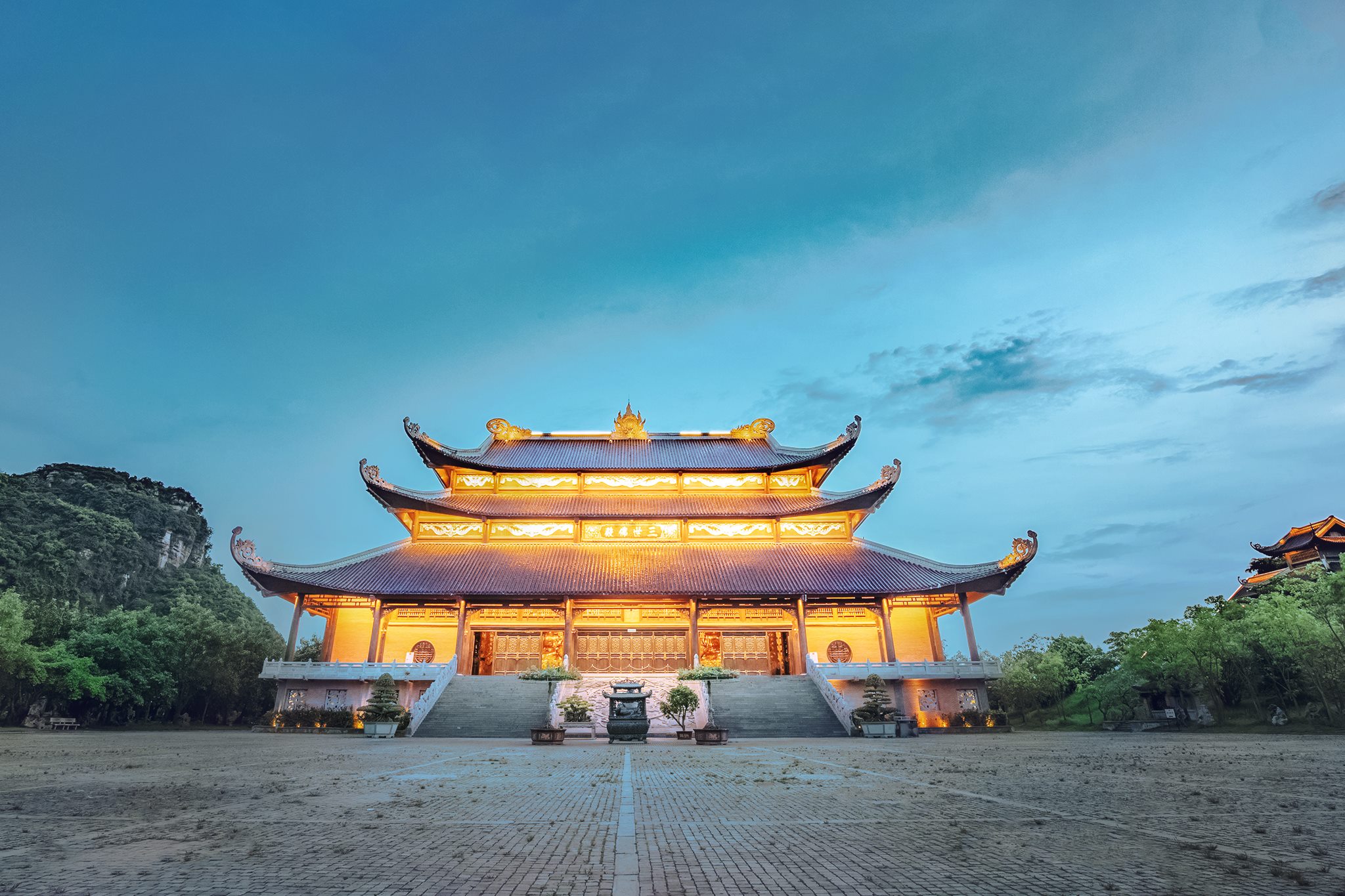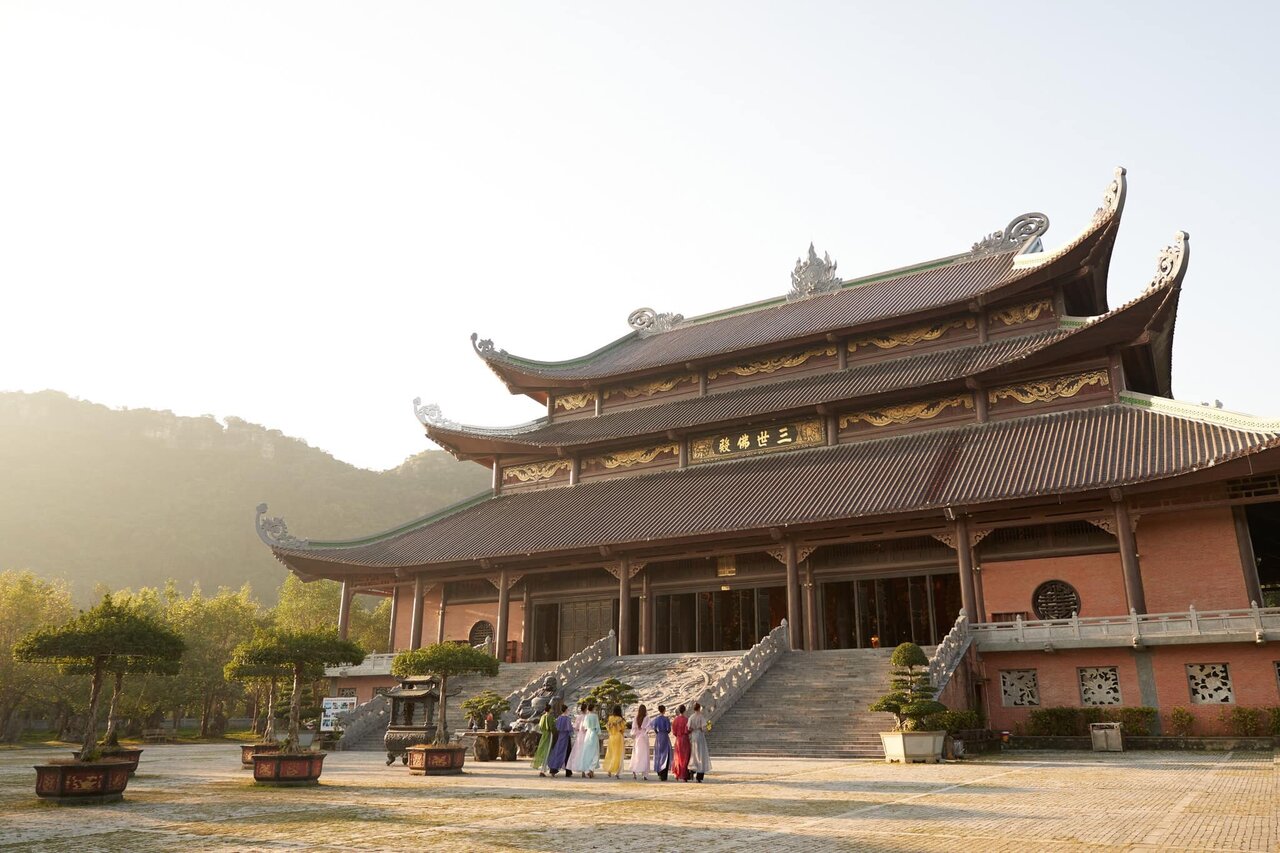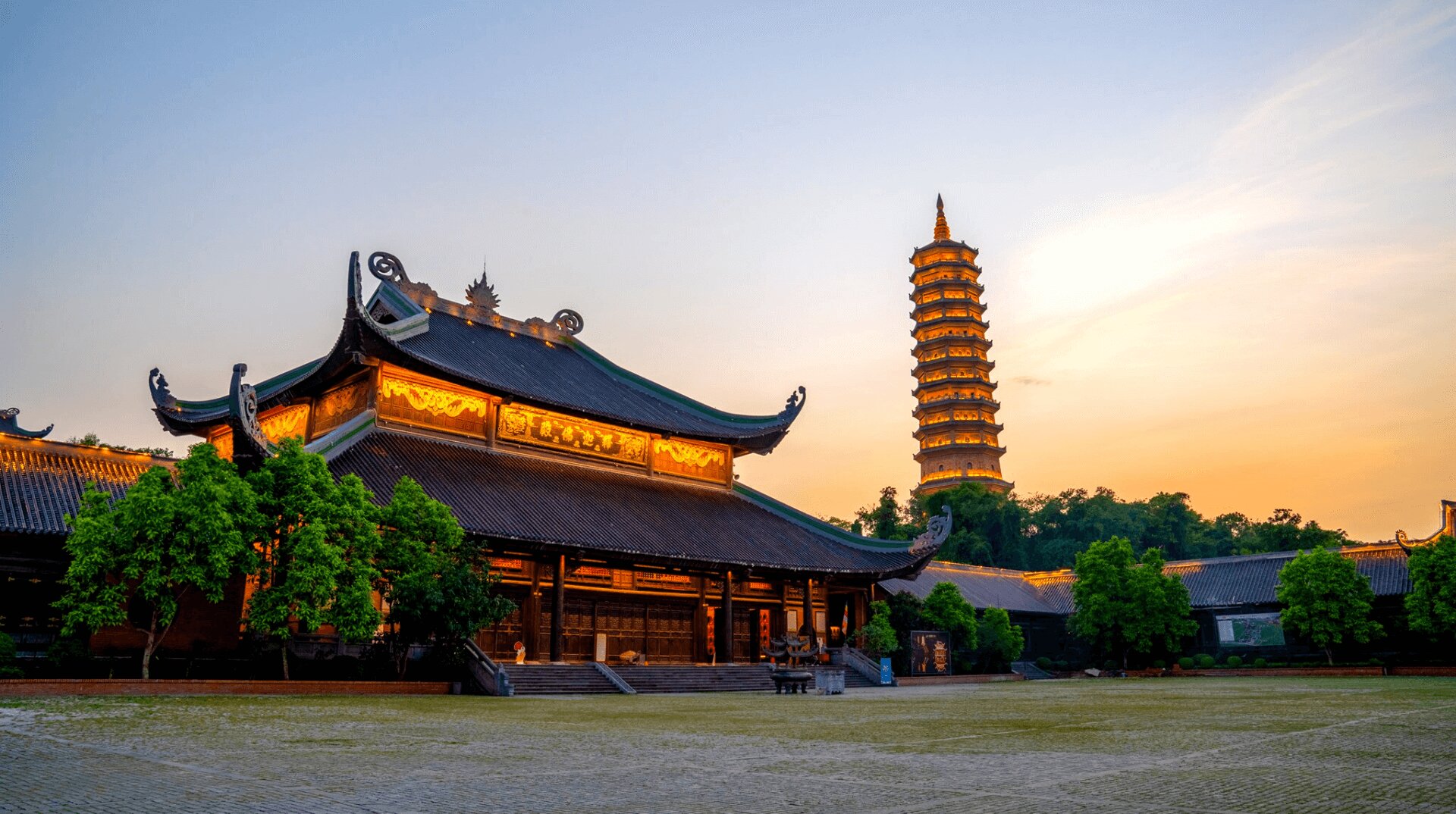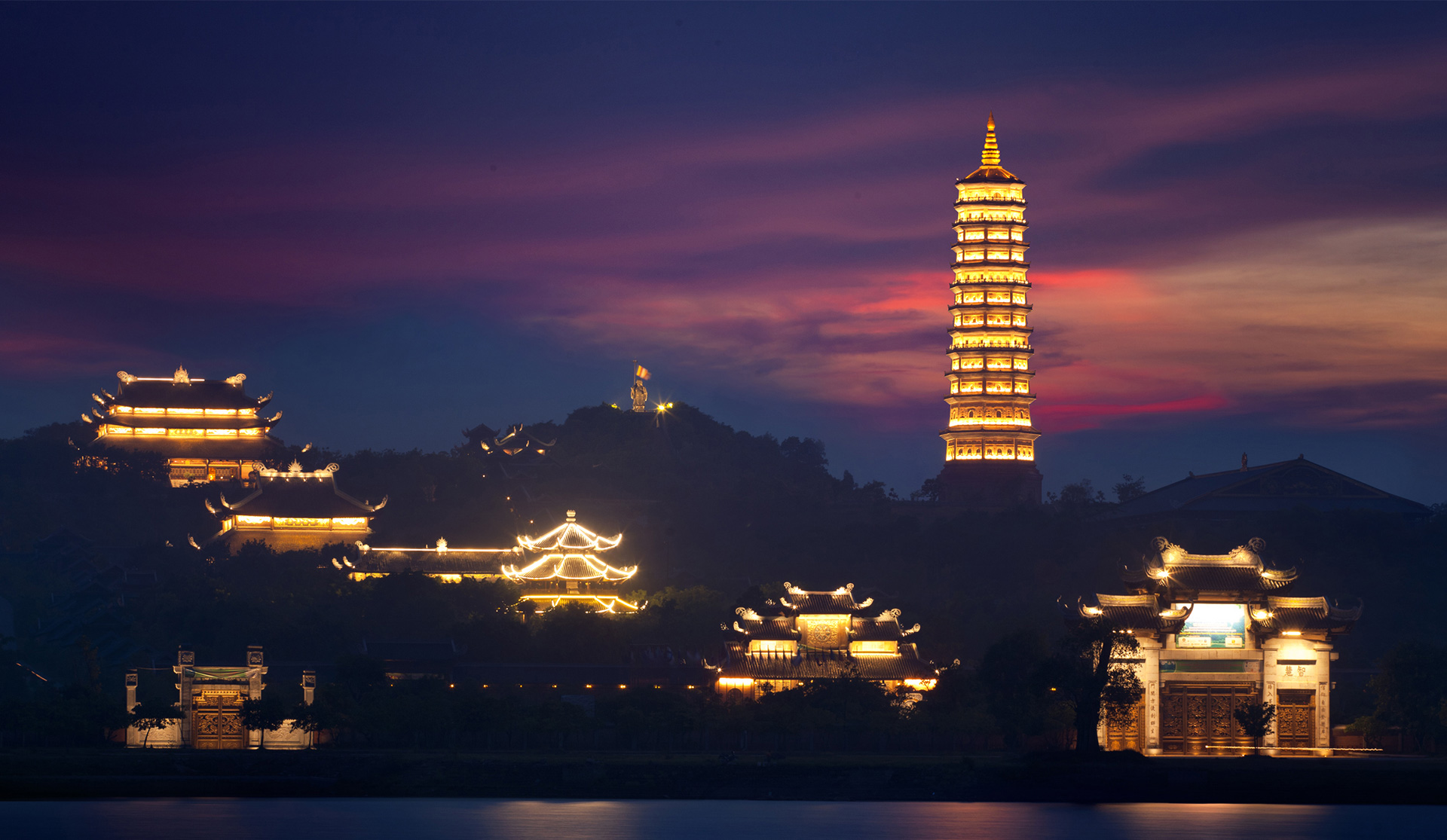Q: What is Bai Dinh Pagoda?
A: Bai Dinh Pagoda is a Buddhist complex located in Ninh Binh province, Vietnam. It is the largest Buddhist complex in Vietnam and one of the largest in Southeast Asia.
--------
Q: When was Bai Dinh Pagoda built?
A: The old Bai Dinh Pagoda was built in the 11th century, while the new Bai Dinh Pagoda was built in 2003.
--------
Q: What are the main attractions at Bai Dinh Pagoda?
A: The old pagoda is home to several smaller temples and shrines, while the new complex features several impressive structures, including the Tam The Temple, the Phap Chu Temple, and the Great Buddha Hall. The Great Buddha Hall is particularly notable for housing the largest bronze Buddha statue in Vietnam.
--------
Q: How do I get to Bai Dinh Pagoda?
A: Bai Dinh Pagoda is located in Ninh Binh province, approximately 100km from Hanoi. Visitors can take a bus or hire a private car to get there. or you can book our tour from 41usd/pax included lunch, English speaking guide, Limousine, entrance fee, visit Trang An, etc
--------
Q: What should I wear when visiting Bai Dinh Pagoda?
A: Visitors should dress conservatively when visiting Bai Dinh Pagoda, with knees and shoulders covered.
--------
Q: Are there any fees to enter Bai Dinh Pagoda?
A: There is no fee to enter the old pagoda, but there is a fee to enter the new complex and fee for electric cars.
--------
Q: Can I take photos inside Bai Dinh Pagoda?
A: Yes, visitors are allowed to take photos inside Bai Dinh Pagoda, but they are asked to be respectful and not disturb others who are praying or participating in Buddhist rituals.
--------
Q: Is Bai Dinh Pagoda open year-round?
A: Yes, Bai Dinh Pagoda is open year-round, although the complex may be closed during certain Buddhist festivals or special events.
--------
Q: Are there any rules or customs I should be aware of when visiting Bai Dinh Pagoda?
A: Visitors should be respectful of the customs and beliefs of those who are practicing Buddhism at Bai Dinh Pagoda. This includes removing shoes before entering certain areas, refraining from speaking loudly or using flash photography, and dressing conservatively. Visitors should also be mindful of the environment and avoid littering or damaging any structures or artifacts.




